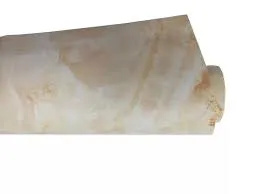- Home
- Innovative Packaging Solutions for Furniture Suppliers to Enhance Protection and Aesthetics in Shipping
Aug . 08, 2024 12:10 Back to list
Innovative Packaging Solutions for Furniture Suppliers to Enhance Protection and Aesthetics in Shipping
The Importance of Paper Wrap for Furniture Suppliers
In the furniture industry, the protection of products during transit and storage is crucial. One of the most effective and environmentally-friendly solutions that has garnered attention is the use of paper wrap. Traditionally, plastic and bubble wrap have dominated the packaging landscape, but the shift towards more sustainable practices has led to the increased adoption of paper wrap by furniture suppliers. This article explores the benefits and considerations of using paper wrap in the furniture supply chain.
Environmental Benefits
One of the most compelling reasons for furniture suppliers to embrace paper wrapping is the environmental impact. Paper is a renewable resource that can be recycled and composted, significantly reducing waste when compared to petroleum-based packaging materials. With the growing consumer demand for sustainable products and practices, furniture suppliers can enhance their brand image by utilizing paper wrap. Utilizing eco-friendly packaging not only adheres to regulatory requirements but also appeals to a customer base increasingly concerned about sustainability.
Protection and Versatility
Paper wrap is known for its robustness and protective qualities. It provides an effective barrier against scratches, dust, and minor impacts that can occur during handling and transportation. Unlike plastic, which can tear easily, high-quality paper wraps offer more durability and can be adapted to various shapes and sizes, making them suitable for a wide range of furniture items—from delicate chairs to bulky cabinets. Additionally, paper wrap is often treated to resist moisture, providing an extra layer of protection against the elements.
Cost-Effectiveness and Efficiency
From an economic perspective, paper wrap can be a cost-effective option for furniture suppliers. Although the initial investment in sustainable packaging materials may seem higher than traditional options, the long-term benefits often outweigh the costs. Paper wrap is lightweight, reducing shipping costs associated with heavier materials. Moreover, its ease of use can lead to more efficient packing processes, ultimately contributing to faster turnaround times for shipping and receiving.
paper wrap for furniture suppliers

Customization and Branding
Furniture suppliers have the opportunity to enhance their branding through custom printed paper wraps. This allows companies to include their logos, brand colors, or messages directly on the packaging. Such customization not only reinforces brand identity but also creates a memorable unboxing experience for customers. In a market where first impressions are vital, using bespoke paper wrap can elevate the overall perception of a brand’s commitment to quality and sustainability.
Challenges and Considerations
Despite its many benefits, there are some challenges associated with transitioning to paper wrap. Suppliers must ensure that the paper used is durable enough for specific furniture pieces and that it suits the logistical demands of shipping. Moreover, training for staff on new packing techniques may be required, which could necessitate an initial investment of time and resources.
Additionally, the perceptions of some customers regarding paper wrap's effectiveness in protecting furniture may pose a barrier. As such, education and clear communication about the benefits of using paper packaging are essential to overcome skepticism and encourage broader acceptance.
Conclusion
The move towards paper wrapping presents a significant opportunity for furniture suppliers to align their practices with modern sustainability goals while enhancing product protection and brand image. As the industry continues to evolve, those that prioritize eco-friendly packaging solutions like paper wrap will likely find themselves at the forefront of the market, garnering the loyalty of conscious consumers and paving the way for a more sustainable future. Adopting paper wrap is not just a trend; it’s a proactive step towards responsible business practices in the furniture industry.
Latest news
-
Discover High Quality Self Adhesive Paper for Cabinets – Durable, Sustainable, Stylish
NewsNov.24,2025
-
Premium High Quality Blue Contact Paper for Furniture | Durable Surface Solutions
NewsNov.23,2025
-
What Drives High Quality Duplex Paper Price? Key Factors and Global Insights
NewsNov.22,2025
-
High Quality Decorative Contact Paper for Cabinets | Durable & Stylish Solutions
NewsNov.22,2025
-
High Quality Stick Paper for Cabinets: Durable, Sustainable, and Stylish Surface Solutions
NewsNov.21,2025
-
High Quality Self Adhesive Cabinet Paper: Durable, Sustainable Finishes for Modern Cabinets
NewsNov.20,2025

